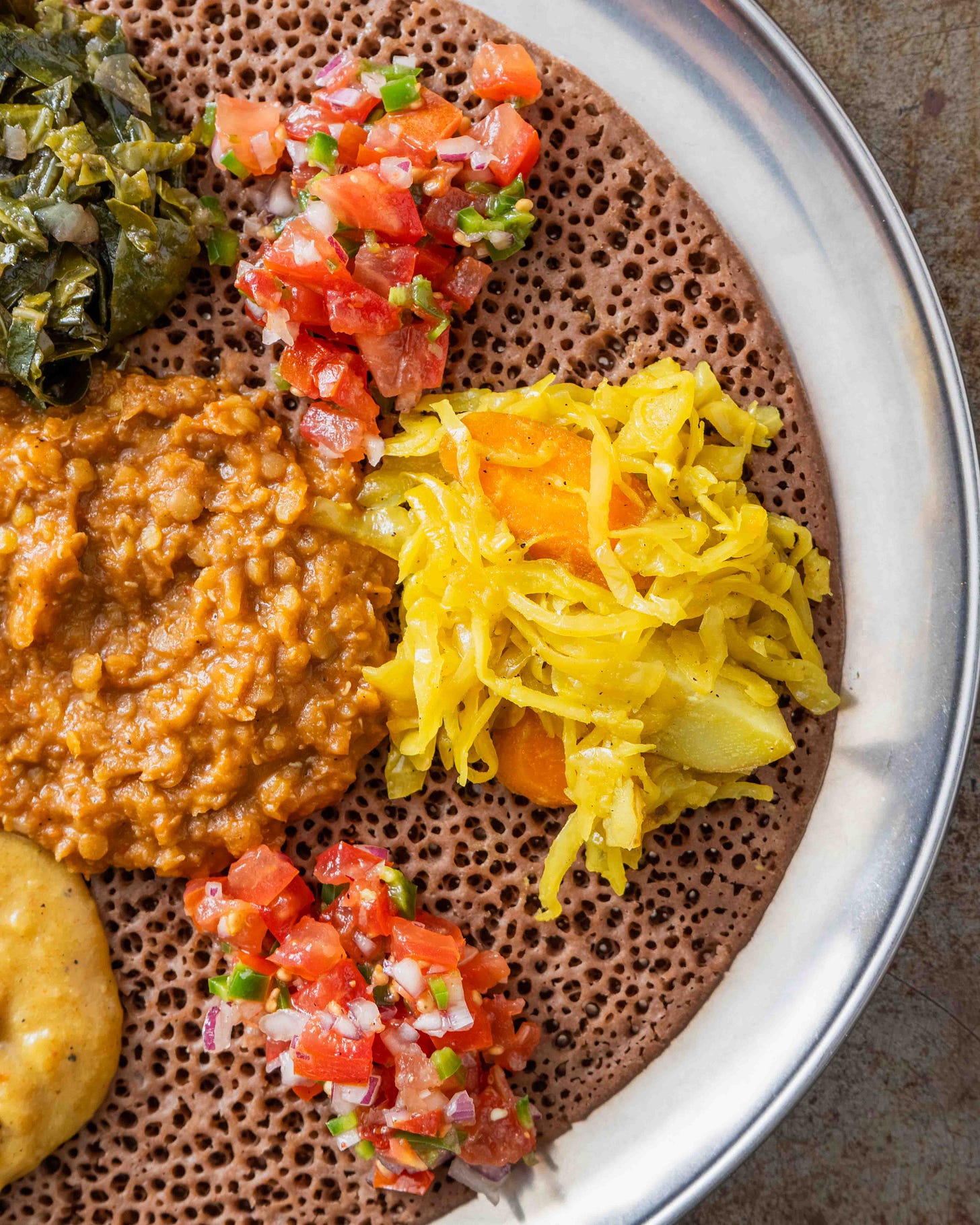Ethiopian Feast - A Traditional Yetsom Beyaynetu
Spiced Red Lentils, Collard Greens, Chickpea Flour Stew, Spiced Veg and a Fiery Tomato Salad
If you think of Ethiopian food, you’ll most likely envision a large platter of spongy flatbreads topped with a rainbow of stews, vegetables and salads. Together, they are known as Yetsom Beyaynetu — a staple across both Ethiopia and Eritrea. I’ve tackled every single element to enable you to recreate that experience at home, but since it has turned into somewhat of a behemoth, I decided to split it over two newsletters.
At the centre of Yetsom Beyaynetu is Injera, the slightly sour, airy flatbread used to scoop up everything else. Famously, it serves as both the plate, since the complementing dishes sit right on top, and the cutlery, as extra Injera are used to scoop up the individual dishes as you go. Making them from scratch is notoriously tricky, but after a whiplash of trial-and-error sessions in my kitchen, I’ve finally cracked the code. This is now officially one of my most tested recipes, as I tried to master each and every step of the notorious fermentation process. All the struggle was well worth it. Now, making a batch of Injera works every single time and, once you know what to look out for, it’s actually much easier than its reputation makes it out to be.
My complete step-by-step guide on how to master Injera will be in next week’s newsletter. In this one, however, I’m sharing five exciting dishes that you’ll commonly find as part of a traditional Yetsom Beyaynetu.
The Vegan Food of Ethiopia
Chances are, the last time you passed an Ethiopian restaurant, you probably spotted the word vegan featured front and center. So why is Ethiopian cuisine so vegan-friendly? Much of it comes down to religion. Roughly 43% of Ethiopians follow the Orthodox Tewahedo Church, which observes fasting periods that can stretch up to 180 days a year — including a 55-day Lent before Easter and weekly fasts every Wednesday and Friday. During these times, followers steer clear of almost all animal products — no meat, dairy or eggs — so the cuisine has naturally developed a rich repertoire of plant-based dishes. Yetsom Beyaynetu literally means “a fasting selection” and is a traditional spread eaten during these times.
One thing to keep in mind if you're eating fully vegan is Niter Kibbeh — a spiced clarified butter that lends a rich depth to many Ethiopian dishes. Though it’s usually skipped during fasting days, it’s used plentiful by those who don’t follow the strict fasting rules, meaning that many otherwise plant-based dishes will start with a generous dollop of it. A quick check with your waiter never hurts.
About the Dishes
Cooking all of the elements for a traditional Yetsom Beyaynetu from scratch is a bit of a kitchen marathon, but even one or two of these dishes will give you a generous, flavour-packed meal. The lentil and chickpea stews alongside Injera can be considered a main, especially if paired with the salad or one of the vegetable sides. And apart from the tomato salad, everything here freezes well —so making a generous batch will always be a win.
A quick note on berbere, the essential Ethiopian spice blend: it’s a complex mix — typically including chillies, garlic, ginger, fenugreek, cardamom, coriander, cumin and cloves — and it often comes with a bit of a kick. If you’d prefer something milder, just reduce the amount used but consider boosting the salt and other spices slightly to maintain balance.
Let’s get on with the recipes. Here’s how to make them…





